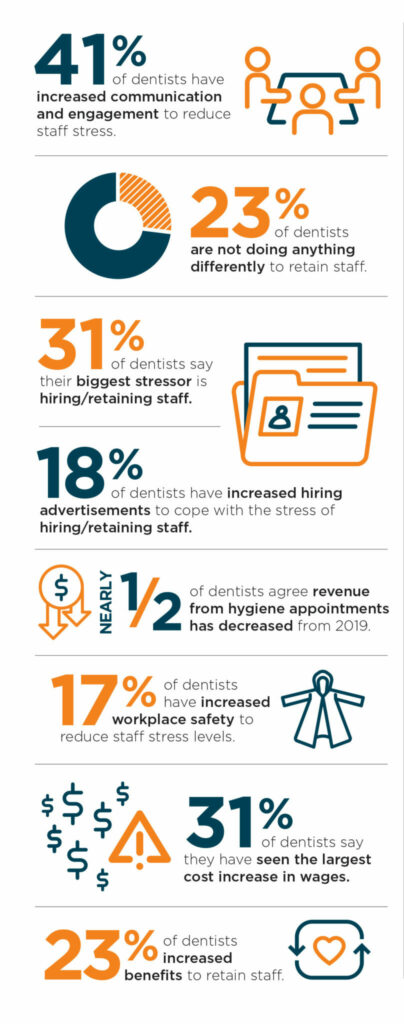Not only have practices been struggling to attract new staff, but many practice owners are having trouble retaining current staff as well. In fact, 35 percent reported they had staff members voluntarily leave their practice last year. Most dentists took to the obvious solution of increasing wages to keep staff happy, and that is a great option to help your staff members feel valued. However, do not ignore the many other ways you can ensure your team feels appreciated and satisfied in their roles.
Production bonuses: Perhaps your office does not have the financial capabilities to give everyone raises. Consider offering production bonuses throughout the year, which will also encourage team members to perform at their best to receive the best results. This is a win-win situation for all.
Practice culture: By being the best leader that you can be and supportive for your team, you will create a positive office culture that your employees will be less tempted to leave. A great way to create a fun, happy yet productive atmosphere is to organize group activities within the office or after hours. Celebrate birthdays, holidays or even bring your team to educational dental events.
One-on-ones: Nearly half of dentists have increased their communication and engagement to reduce staff stress. If you are meeting with staff on an individual level and hearing them out regarding any problems or complaints they may have, it will help staff feel empowered. Allowing staff to give feedback and make suggestions could also lead to improvements to your office that you would not have come up with on your own.
As seen in the print issue of Oral Health May 2022















